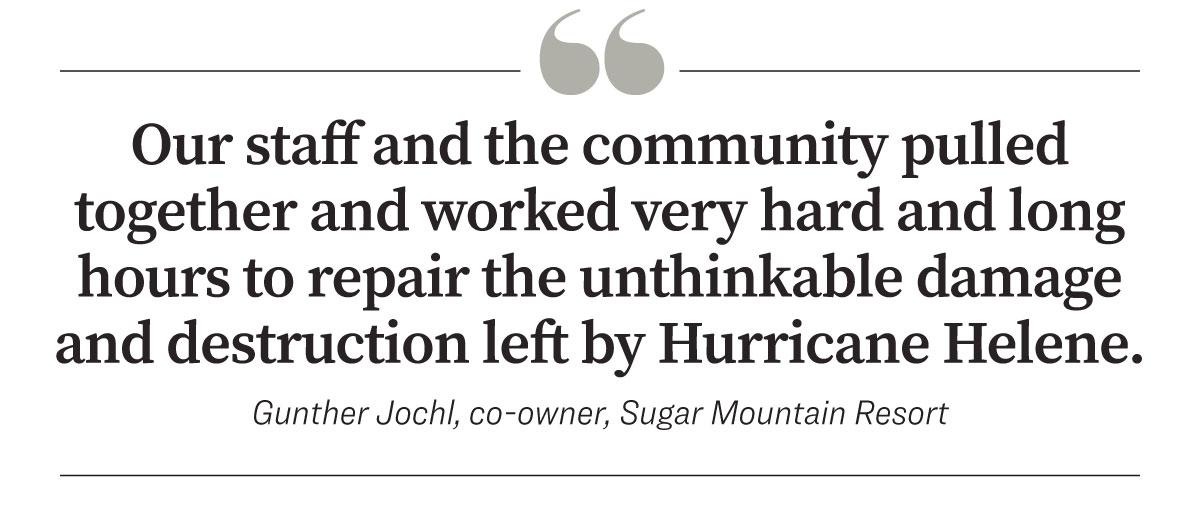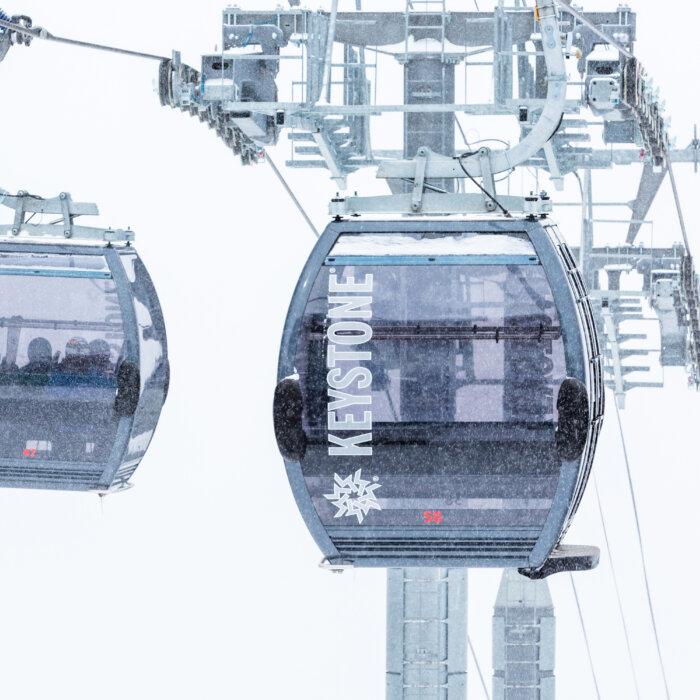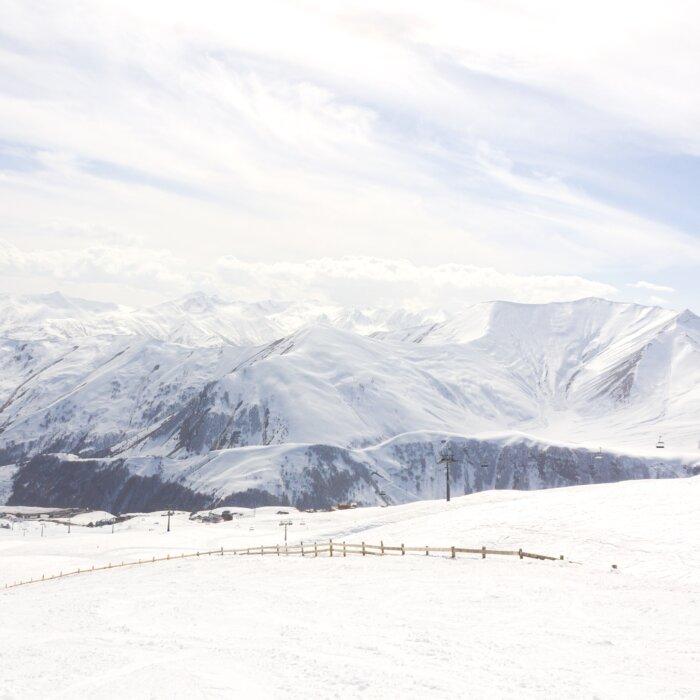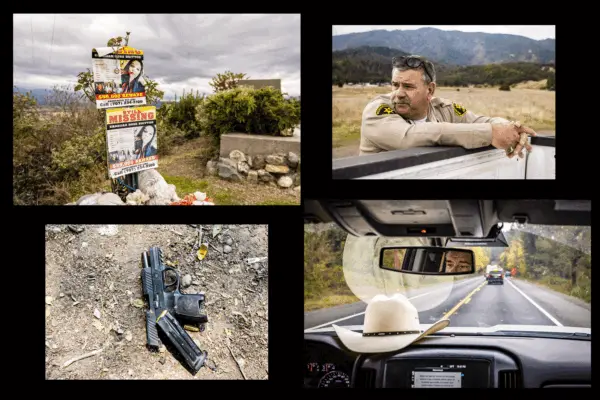AVERY COUNTY, N.C.—“It’s hero snow today,” Kimberley Jochl said after making her first descent of the day at Sugar Mountain Resort in Banner Elk, North Carolina.
“Hero snow” is a term the former downhill racer for the U.S. Alpine Ski Team uses to describe conditions so forgiving that anyone can feel incredible on their skis, like a hero on the slopes.
But for Jochl—who runs the resort with her husband and other business operators in western North Carolina, the snow itself is considered a hero of a different kind this season.
After a villainous storm that shut down vital fall tourism in the region, they hope this year’s snow is the hero that reignites the economy.
Record-breaking early snowfall and consistently colder temperatures allowed Sugar Mountain slopes to open on Nov. 22. It’s one of six ski resorts in the region.
The successful opening of powdery playgrounds for ski season is helping to bolster the reopening of other businesses across the region. Many still are struggling to recover from the devastation brought by Hurricane Helene on Sept. 27.
After weeks of state authorities telling folks to stay away, community leaders and local business owners now want the world to know that their mountains are open.
They hope this winter continues to send a steady supply of hero snow to help revitalize tourism and carry them into summer.
“A lot of people don’t understand that October is the month that a lot of our small businesses use to get through the winter,” said Robin Morgan, executive director of the Avery County Chamber of Commerce.
Bluebird Days
The snow on Sugar Mountain’s slopes was soft and a few inches thick on Dec. 8, enough to hide any icy slicks that can plague skiers.Ski resorts across the United States grade ski slopes based on the skill level needed to navigate them. A posted green circle indicates one of the easiest runs available. A blue square signals the run is steeper and best for intermediate skiers, at least. A black diamond is the designation for the most difficult slopes. Those are the steepest and bumpiest of the three classes.

Sugar’s six-person chairlift, the Summit Express, gives passengers choices on how to descend its 1,200 vertical feet.
They can take the winding blue route, plunging down the Northridge run, cutting a hairpin turn to merge onto the Switchback. That path empties skiers onto Upper Flying Mile and delivers them to the bottom by way of the Lower Flying Mile.
In December, the most skillful skiers cut the corner to Upper Flying Mile and shot down the resort’s only black diamond run open at the time. On Tom Terrific, they faced a sudden blind drop followed by a sharp left turn.
Near the top and bottom of the chairlift, skiers and snowboarders egg on their buddies to attempt the black diamond path. Taking the ride back up, they carefully study the skiers already on the run, some of whom launch themselves off the sudden drop.
Resort guests revel in the beauty of the day. Jochl’s “hero snow” had appeared on what skiers and snowboarders were calling a “bluebird day,” when clouds disappear and the entire mountain glistens under a bright, clear-blue sky.
Gunther Jochl, the Austrian-born co-owner of the Sugar Mountain Resort and Kimberley’s husband, said it was gratifying to see the area’s resorts open after Helene.
“We went through a lot,” he told The Epoch Times via email.
“Our staff and the community pulled together and worked very hard and long hours to repair the unthinkable damage and destruction left by Hurricane Helene.”
Gunther Jochl has been with the resort since 1976, starting out as a general manager. He and his wife have been co-owners since 2011.
Helene plowed into North Carolina with historic amounts of rain. Mount Mitchell State Park recorded rainfall totals of more than 24 inches in three days. Asheville’s airport recorded nearly 14 inches in that same time.
That rainfall caused catastrophic flooding. It swelled rushing rivers and creeks to dozens of feet higher than their normal levels. Entire roads, bridges, homes, and hillsides were washed away.
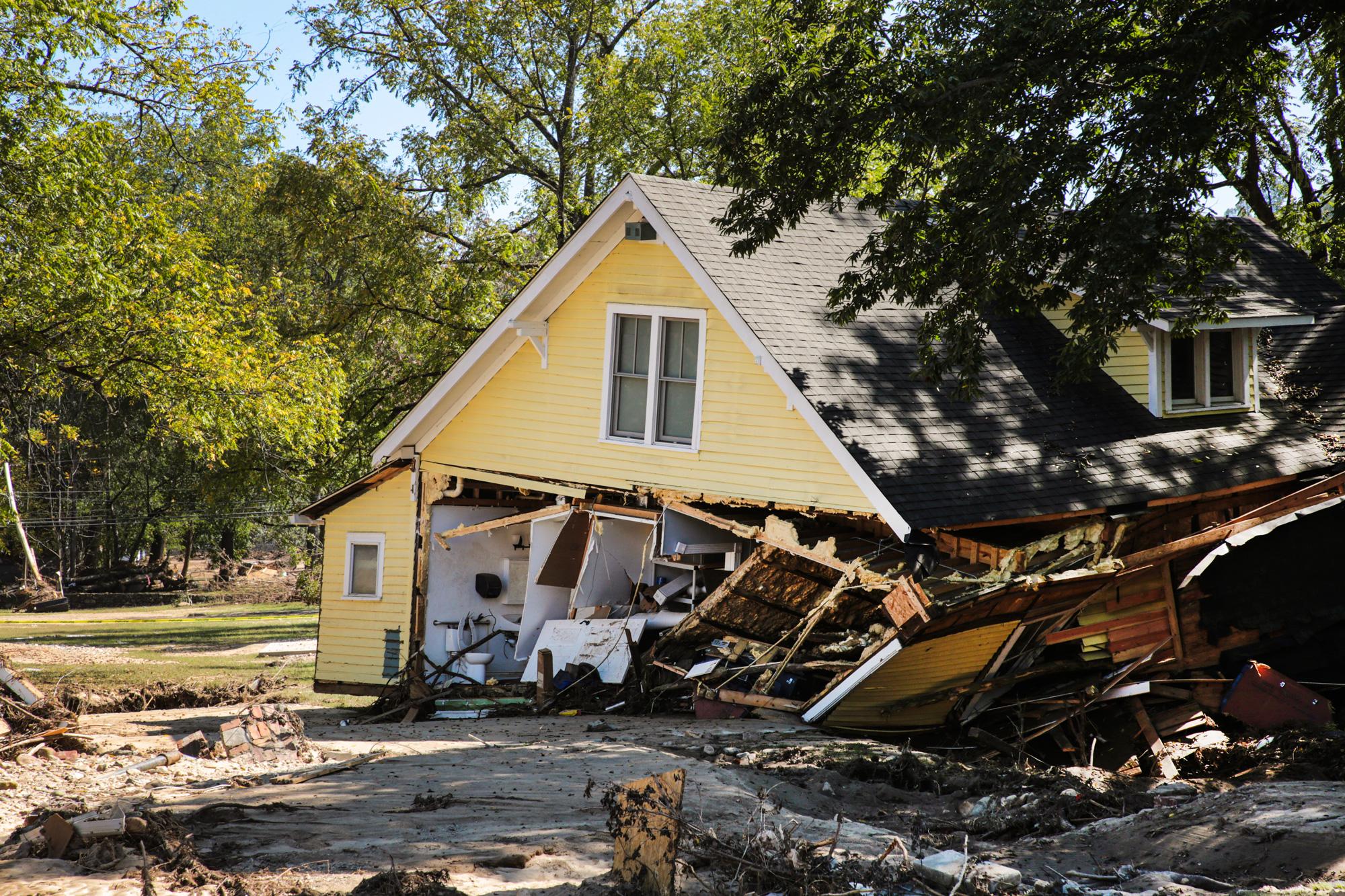
As of Dec. 11, 103 people were confirmed to have died as a result of the storm, according to North Carolina’s Department of Health and Human Services. Five were in Avery County.
‘Intense Situation’
On Sugar Mountain, as well as the other resorts, tree-toppling winds battered ski lifts and buildings. Torrential rains birthed landslides and overflowing rivers.Riding the chairlift back to the summit, Kimberley Jochl pointed out a pile of downed trees covering the north end of the ski area.
“The storm just sort of churned, and churned, and churned here for quite a while,” she recalled.
“And then the wind picked up and started blowing really hard and really just decimated a lot of the trees here along the ridgeline.
“The river was roaring,” she said. “It was a pretty intense situation.”
Gunther’s Way, a long, black-diamond run that she named after her husband, was still snowless in the early season. A patch of lighter soil there—evidence of the storm’s path—stood out on the mountainside like a scrape on a child’s shin.
A double-black-diamond run–deemed for experts only and dubbed the Whoopdeedoo—also showed damage from landslides.
Both had been reseeded so they could grow a new carpet of grass.
The roofs of some slopeside chalets still needed mending. Trees and some lights used to illuminate slopes for night skiing were torn down by Helene.
However, the ski lifts, the slopes, the lodge, and other elements crucial to the resort’s operations came through the disaster practically unscathed.
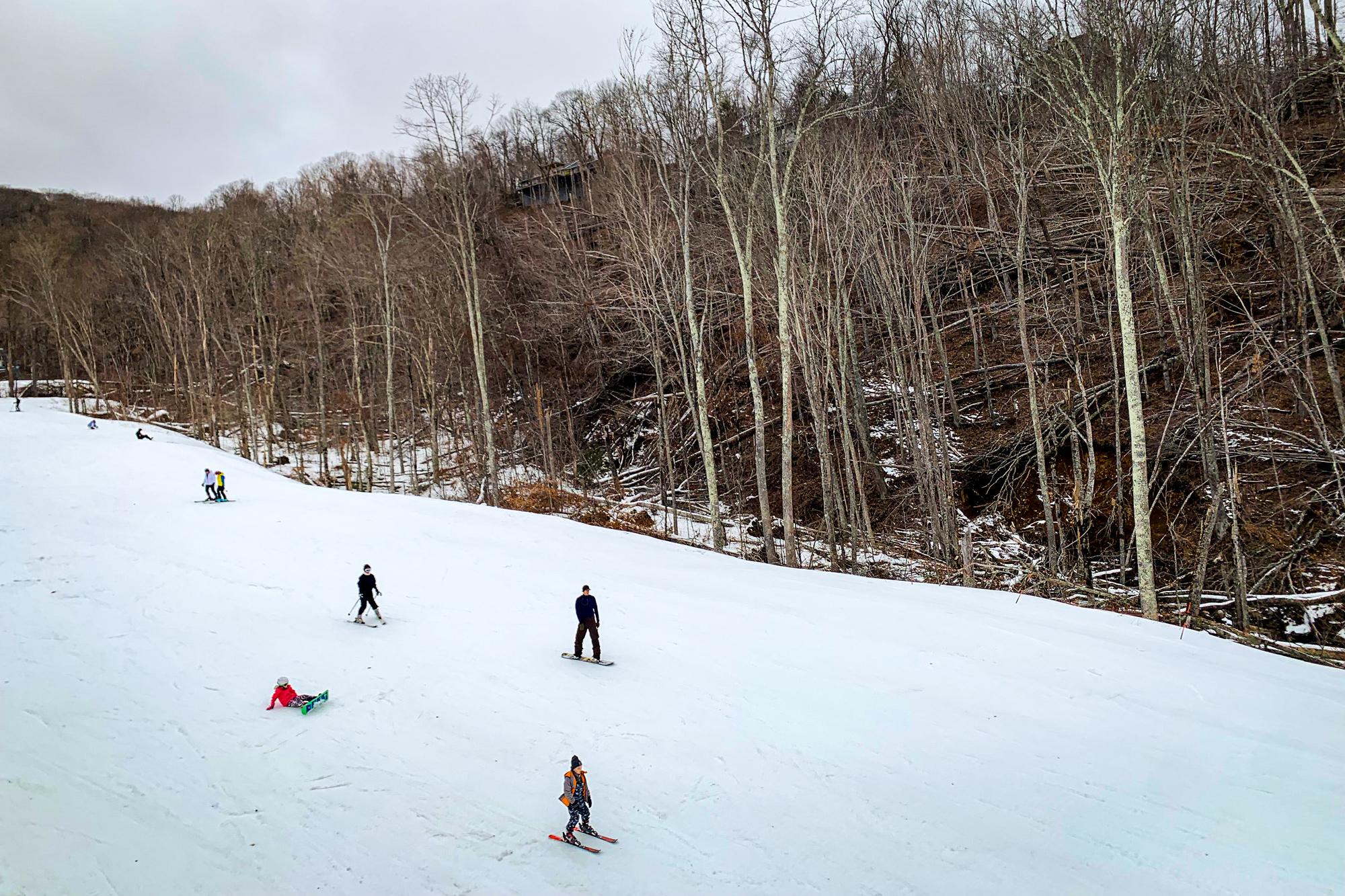
Almost three months later, Gunther Jochl can hardly believe how much progress has been made.
A Road Through Recovery
Miles of damaged Interstate 40, which connects North Carolina to Tennessee, remain closed.Hillsides along Interstate 26 and U.S. Highway 19 are littered with downed tree lines. Eroded banks of now-calm rivers and creeks bear the marks of Helene’s claws.
Skier Bella Horrock made the four-hour drive to the area from Liberty University in Lynchburg, Virginia. She, her husband, and several of her teammates on the Christian university’s freestyle team traveled to Beech Mountain Resort to participate in a competition.
As spectators and judges watched, skiers and snowboarders executed flurries of jumps, spins, flails, and flips, before hiking back up the hill for another downhill run.
The resort’s ability to open for normal operations after Helene was “definitely a blessing,” Horrock said.
“I feel like it’s a good way for them to get some money in, you know, for the town, and for cleanup efforts.”
Her fellow students shared her joy to be back on the hill.
“[I’m] just thankful that we still get the opportunity to come out here and glorify the Lord through the sport He’s given us,” Coby Liebelt said after placing third in the competition.
“I think it’s a beautiful opportunity after the wake of [Helene] to come out and come together with brothers and rejoice despite the hardship of that season.”

Community Coming Together
The peaks of Beech and Sugar mountains bookend the panorama in the towns below.In Banner Elk, the Best Western hotel sits on a street that was under several feet of rushing water during Helene’s thrashing.
”It almost came through the front door,” said Shannon Maness, the hotel’s general manager. “It was like the Mississippi River flowing out there.”
She pointed to a single-story shopping center across the street.
It was underwater after the storm, she said. The parking lot still harbors a crust of mud left behind by the floodwater.
As Helene tore through the area, Maness and her team began moving food, water, and other items to the second floor. Anxiously, they watched the weather radar app until they lost cellphone service.
Later, in Helene’s wake, the hotel became a hub of relief. Even with no power in the first week after the storm, it could at least provide water to neighbors.
Stonewalls Restaurant and Mountain Grounds Coffee & Tea Co. pitched in to provide food and helped people cook their meals.

“We sort of started spreading the word that we‘d have the food truck in the parking lot at three o’clock for anyone that needed a meal, not knowing who would really show up,” Stonewalls owner Scott Garland told The Epoch Times.
On the first day, 200 people showed up. The next day, another 100 people streamed in for nourishment. By Day 4, the food truck had served 500 people, he said.
The next week, a local catering company started using the Best Western kitchens. Then the World Central Kitchen arrived to help distribute food, Garland said.
Eventually, the cooperative effort was yielding 1,000 meals a day for hungry neighbors.
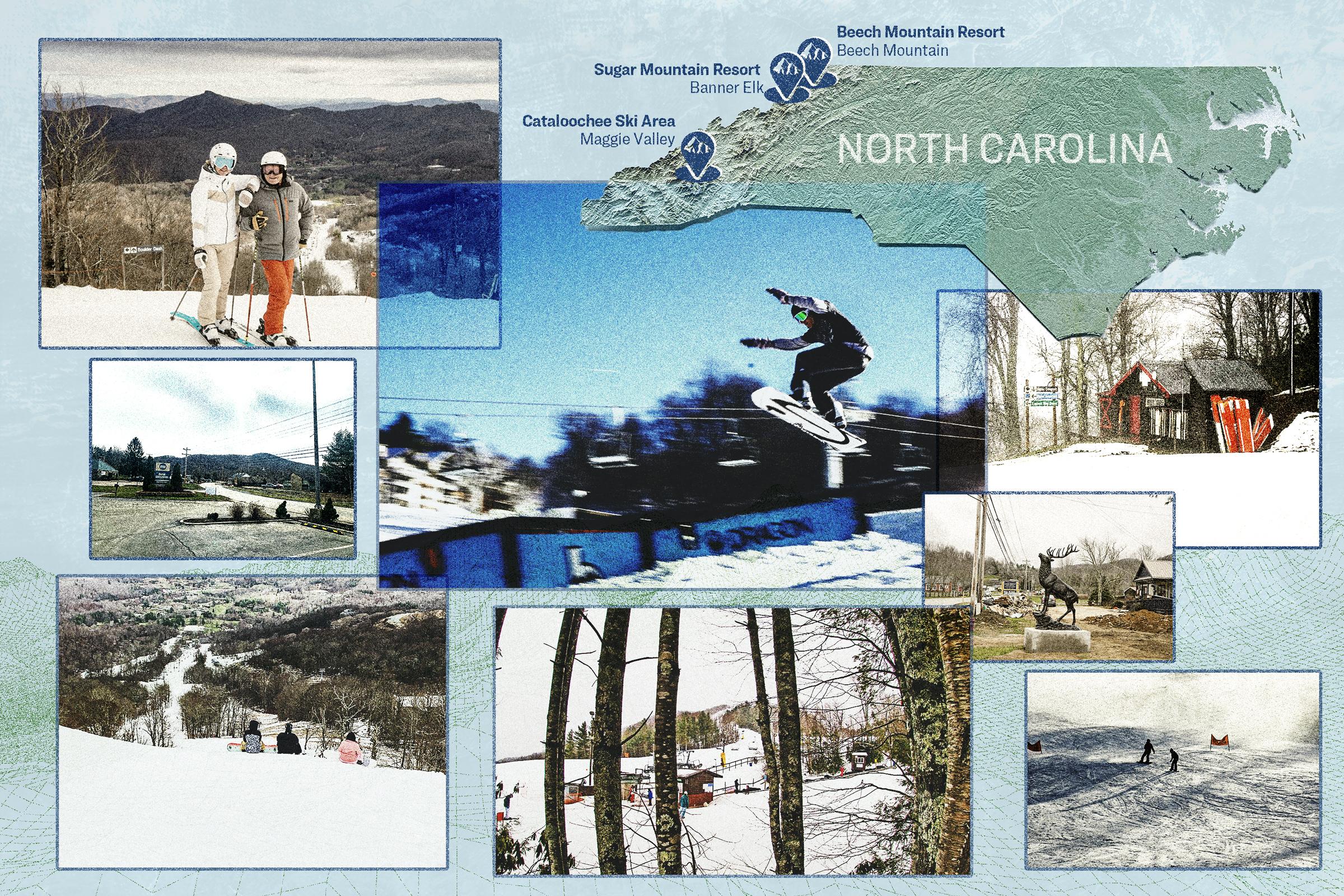
“The first day or so was kind of like understanding the damage and understanding our situation,” said Hayden Breckenridge, owner of Mountain Grounds Coffee & Tea Co.
“So after about Day 2, we realized we had a lot of food products … that was either going to go bad or people could use. So we decided to go ahead and get it out there. We started serving bagel sandwiches.”
It took Breckenridge and his wife two days to get to their store. Roads on the route had been rendered impassable. Some had parts that were completely washed away.
When they discovered they had power and water, they started serving people in need, eventually passing out about 3,000 sandwiches.
They opened their doors to people needing to charge their phones so they could try to contact loved ones beyond the mountains.
Just after the storm, the Best Western took in about 130 people, including first responders, linemen, and workers with the American Red Cross.
As of December, people who lost their homes in Helene still occupied about 50 rooms in the hotel.
Many business owners in the region couldn’t reopen for more than a month after Helene’s devastating hit. Those weeks of shuttered storefronts came during the county’s most crucial time of year for keeping the area economy healthy.
October isn’t just the month to come see the legendary fall foliage, when mountainsides seem ablaze with leaves turning yellow, orange, and red, Morgan said. It’s also the season of the Woolly Worm Festival, a 47-year-old event that attracts 20,000 visitors to Avery County each year.
The main event is a race of about 1,000, colorful woolly worms—larvae of the Isabella tiger moth—that climb up suspended strings. The worms are naturally bedazzled by bristly segments in a variety of hues. The stripe pattern on the race winner is said to predict winter weather, much like the famous groundhog of Punxsutawney, Pennsylvania, heralds the coming of spring.
The festival’s race winners have been more accurate in their predictions than Punxsutawney Phil, who makes his annual appearance on Groundhog Day in February, Morgan told The Epoch Times.
A winner with wide brown bands in its middle predicts mild winter weather, according to festival tradition. If the winning woolly worm has long black bands, that means a longer, colder, and snowier winter is coming. Snow is good for business.
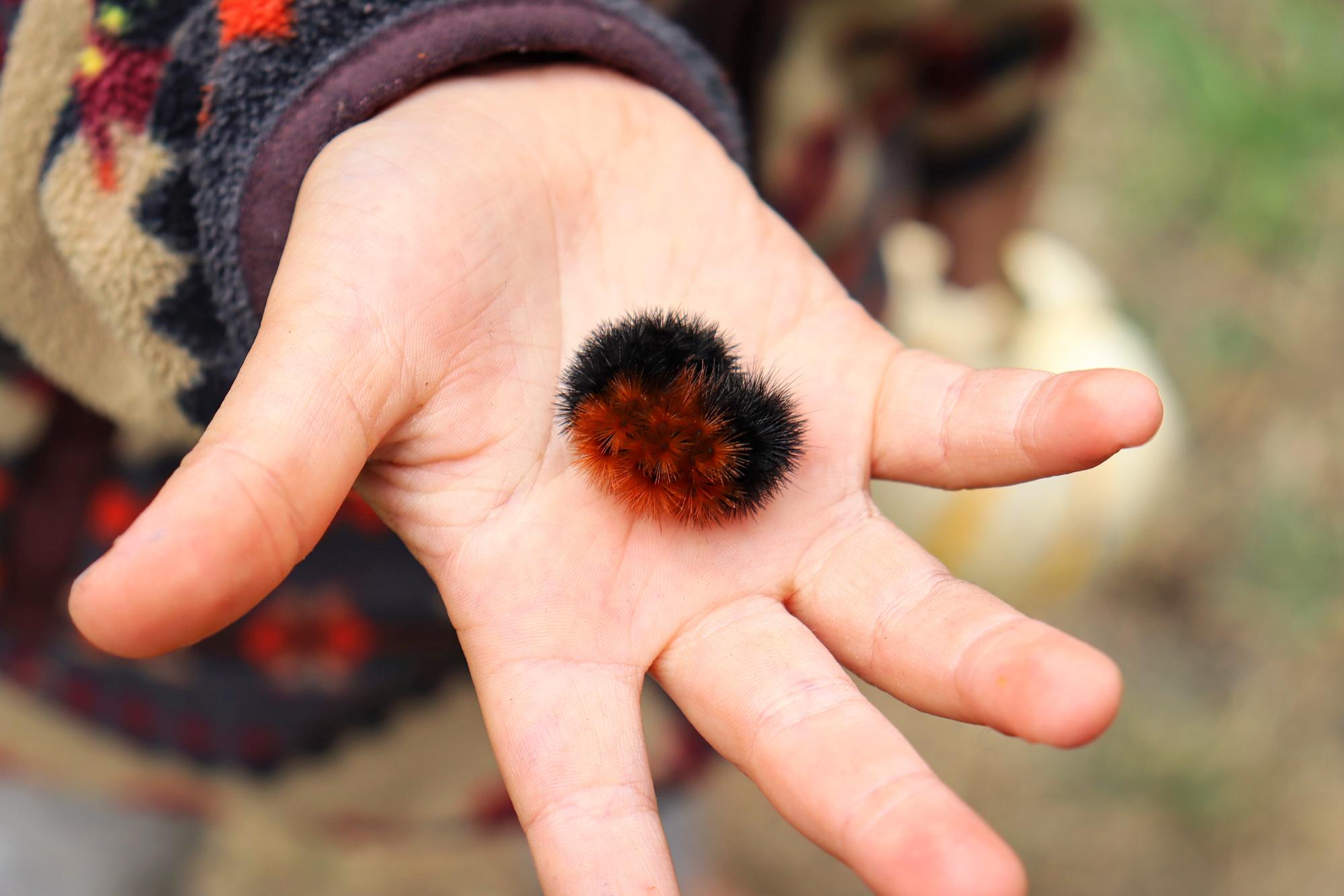
People who bank on the annual “prediction” of the winning woolly worm had good reason to expect a happy outcome.
The stripe pattern on this year’s winning racer suggested there would be snow—light snow—and below-average temperatures for nine of the 13 weeks of winter and average temperatures for the remaining four weeks.
The loss of tourists because of the storm caused a 30-percent drop in Garland’s business from the previous year.
“October is the biggest month up here for anyone that’s in hospitality and the retail industry,” he said. “It’s our largest month of the year, what sort of pulls you through the winter.”
The Breckenridges estimate they lost 15 to 20 percent of their annual income because of Helene’s untimely arrival.
With that annual windfall gone, it will be up to snow-dependent tourism to get people through the winter, business owners said.
Those who make it can be rewarded in the summer. Visitors in that season triple the county’s population as they seek respite from warmer climes in the cool mountain air.
But for now, many business owners simply need snow to survive until then, they told The Epoch Times.
“The ski areas are very important to the economy of the high country,” Kimberley Jochl said.
“The gas stations sell more gas. The grocery stores sell more groceries. The hotels get filled with people. The restaurants get filled.”
In Haywood County, home to the Cataloochee Ski Area in Maggie Valley, tourist areas cleaned up more quickly than in some other parts of the region.
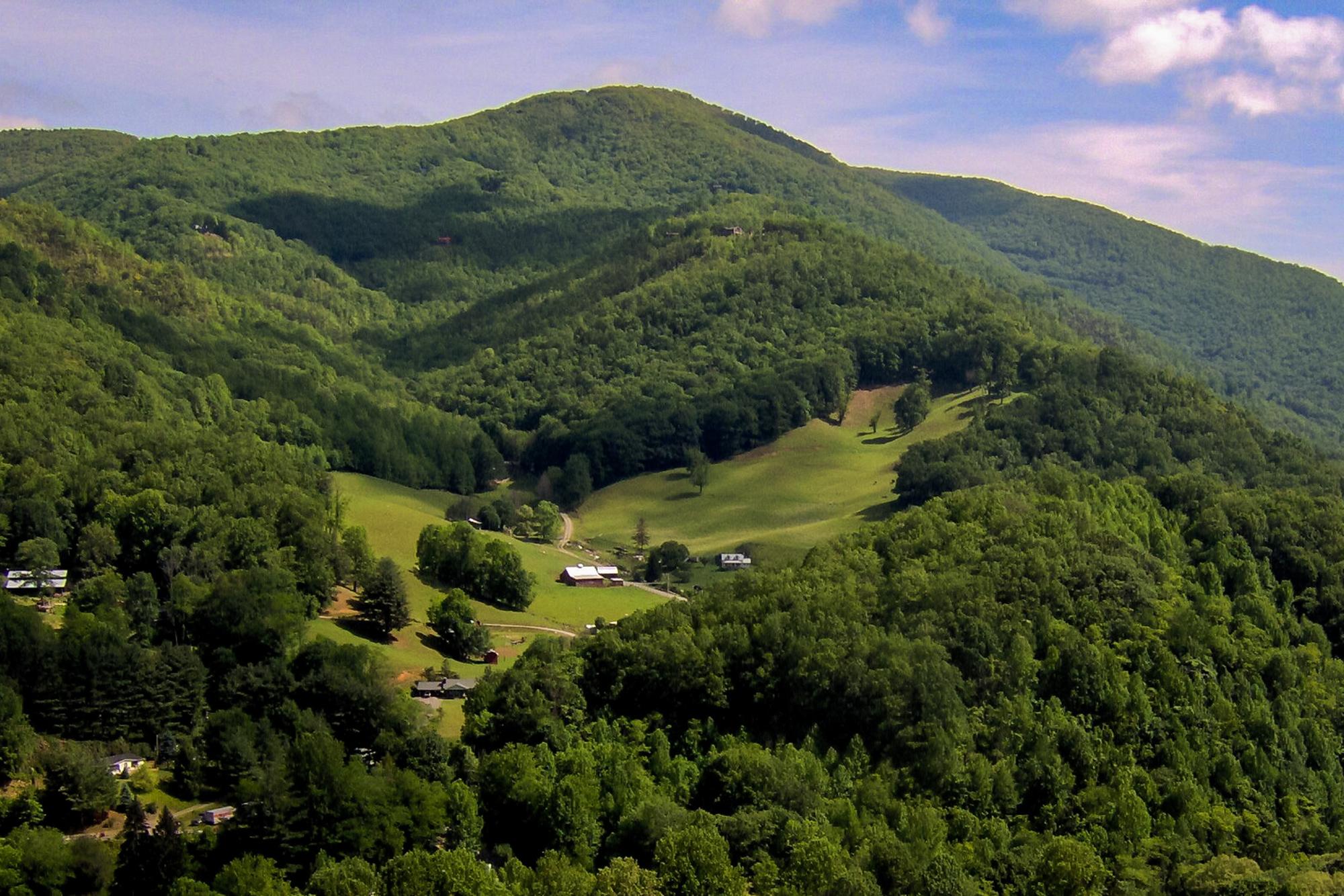
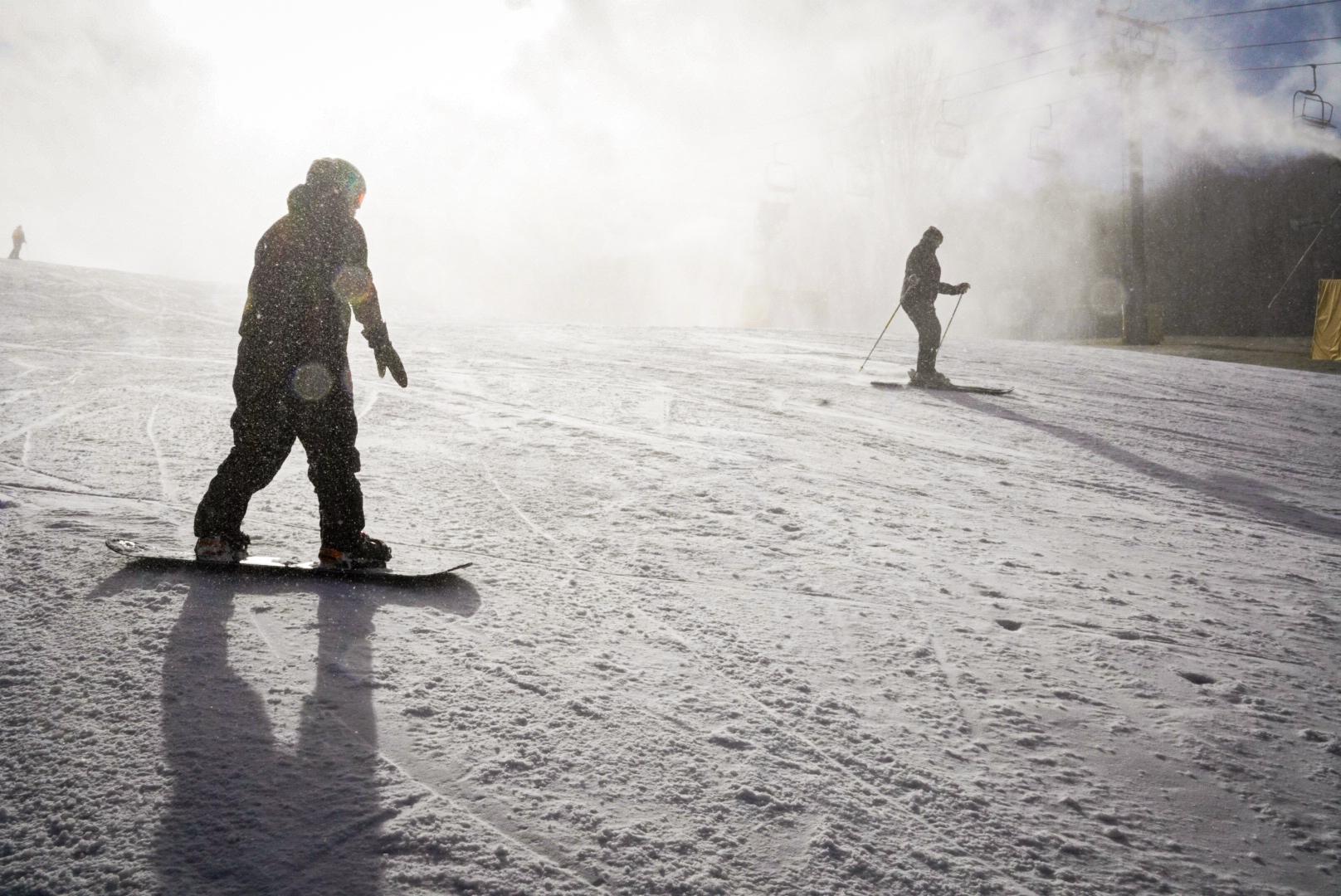
But for more than a month, an interactive map on the North Carolina Department of Transportation website highlighted the entire western quadrant of the state in bright red with this warning: “All roads in Western North Carolina should be considered closed.”
“It killed us,” said Sue Pendley, owner of Maggie Mountaineer Crafts. “There was always a way to get here.”
Sarah Worrell works at the Cataloochee slopes, which opened for the season on Nov. 23.
“Getting the word out about Haywood County being open, I think, is the biggest challenge,” she told The Epoch Times.
“There were a lot of people I saw on social media saying, ‘Oh, they’re closed down,’ or ‘they need help.’
In frustration, she wanted to say, “No! We need you to visit. We need the support.”
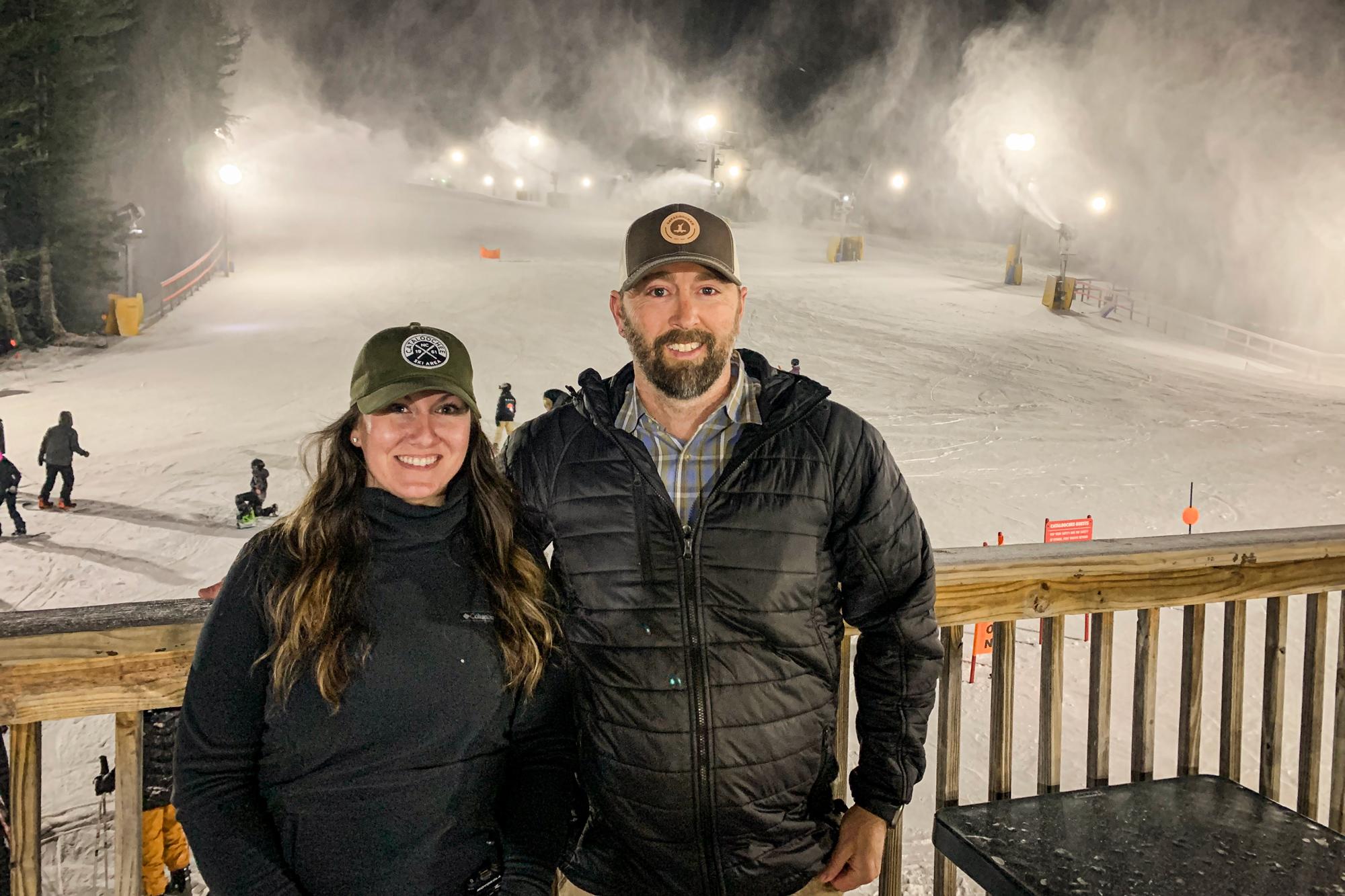
When Weather Turns From Villain to Hero
The early cold allowed at least three western North Carolina resorts to create machine-made snow and open around Thanksgiving.There’s been natural powder, too, in some areas. Sugar Mountain had celebrated 20 inches of snowfall by early December.
“We’ve had terrific cold temperatures,” Jochl said.
Appalachian Ski Mountain, just outside Blowing Rock, North Carolina, opened on Dec. 3. Hatley Pointe in Mars Hill is also now open.
“The cold weather, so that they could keep making snow, is fantastic,” Morgan said. “That is exactly what we need now.”
Still, talk of the benefits of snow often turned solemn. Some displaced neighbors who lost homes to Helene are enduring a cold winter in tents.
“It is a double-edged sword,” Morgan said. “It’s tough being out there rebuilding. But our economy needs to keep going.”
For residents to reclaim their lives, businesses in hard-hit areas must survive. Tourists can keep them alive, business owners said.
But only if there’s snow.
“Worst case, what happens is we have no ski season,” Breckenridge said. “None of the businesses make it. No support. And then we can’t help anyone.”
On Dec. 11, two days of warm rain came to an end. A cold front descended on the mountains, bringing a light snow to Cataloochee.
Later that day, with reservoirs replenished by rain, snow-making machines whirred back into action. They picked up where nature left off, blanketing open ski runs in white powder well into the night.
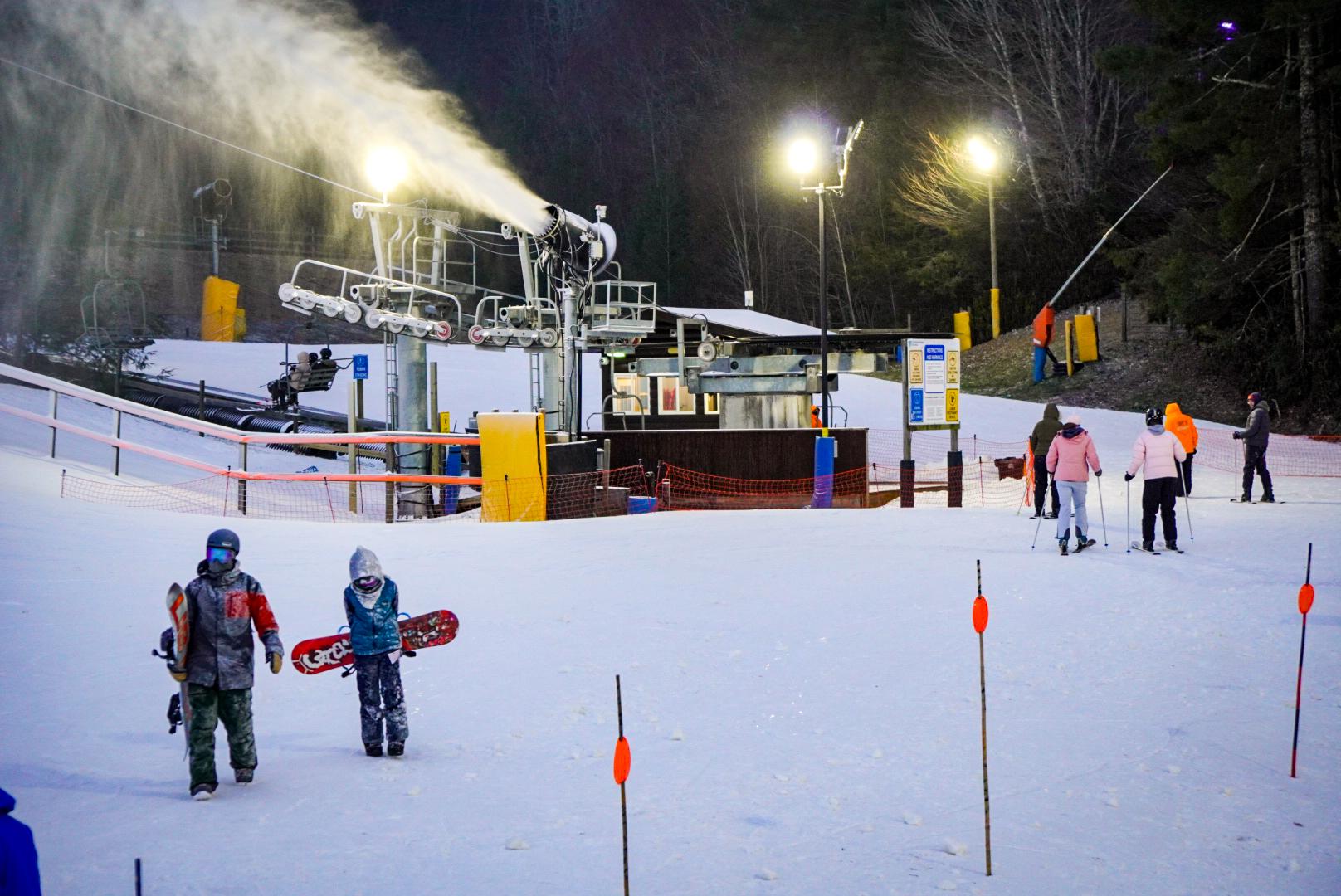
“I never thought I'd co-own a ski area in North Carolina,” Kimberley Jochl said. “As a matter of fact, I never even knew there were mountains in North Carolina or that it snowed.
“I now am one of the staunchest promoters of North Carolina skiing.”
Colder snowy weather hit again on the weekend of Dec. 21, as several inches of natural snow blanketed hillsides, and snow-making machines worked, too.
All five of the region’s open ski resorts shared pictures of their winter wonderlands to social media, celebrating their early Christmas gift.
It was a true hero snow.

